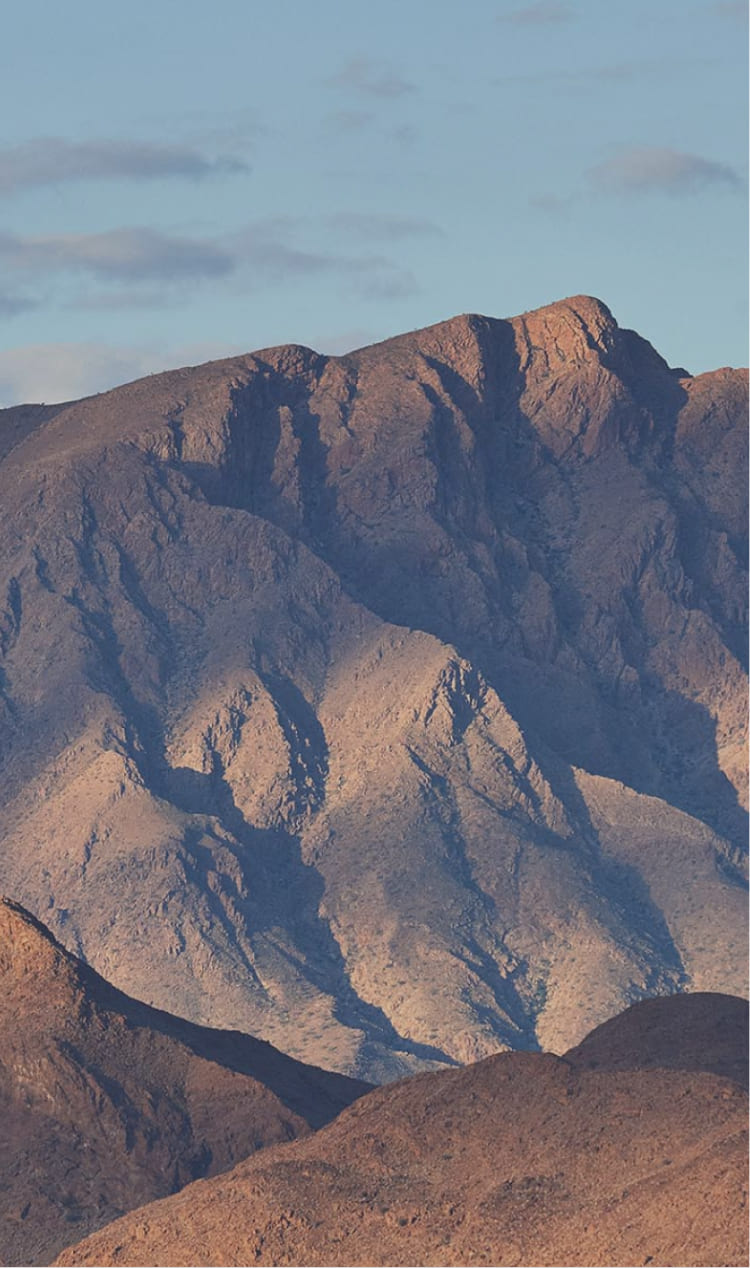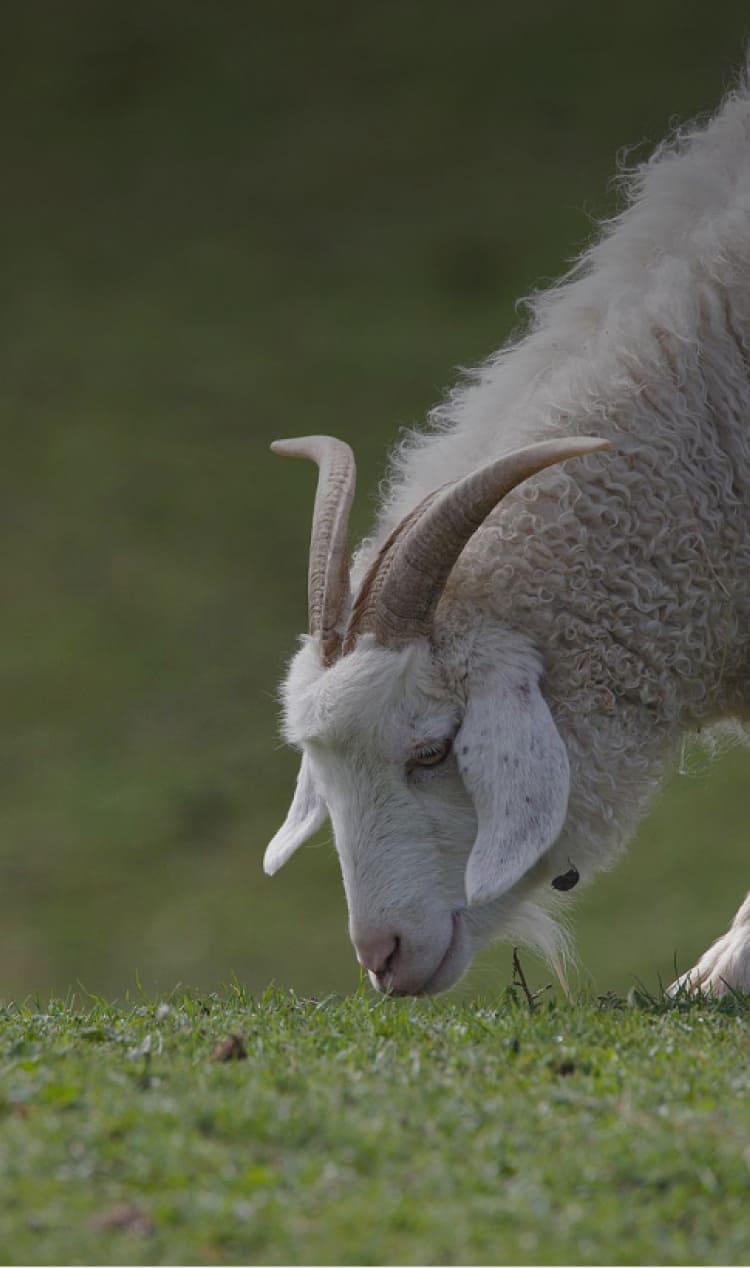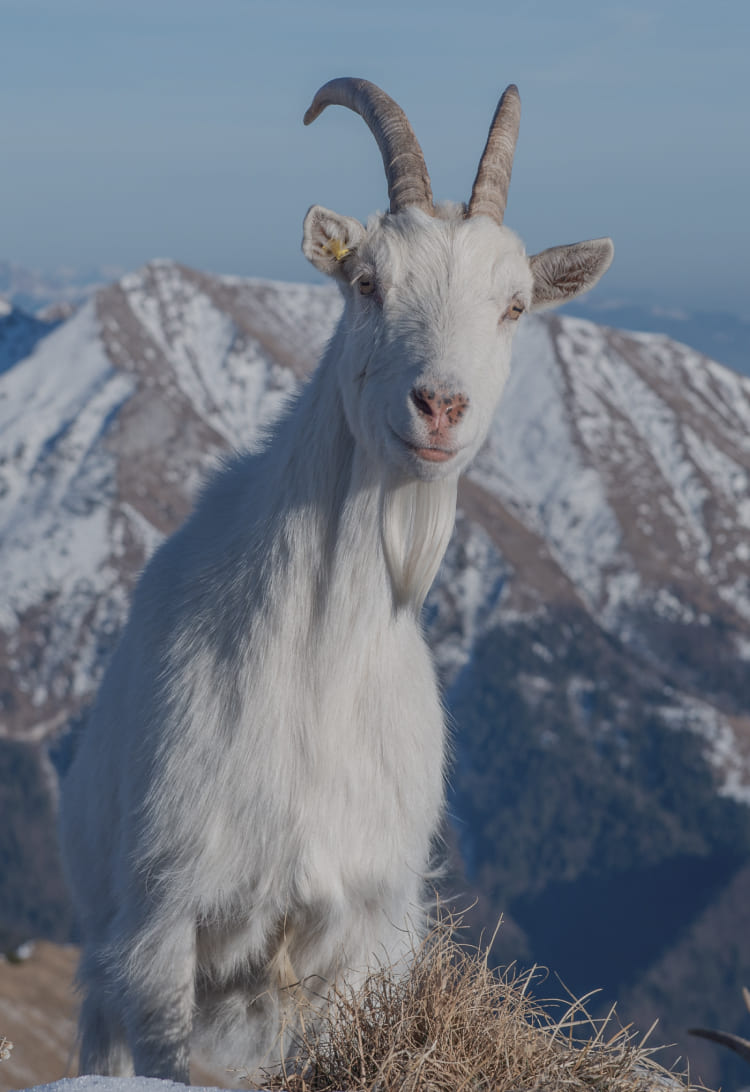THE PERFECTION OF NATURE BY TOGAS
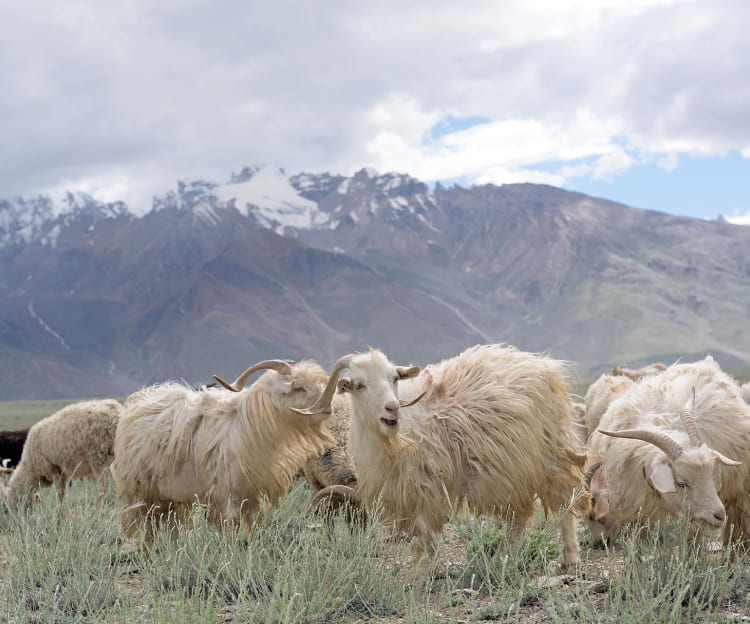
Masters of the Snowy Peaks
Cashmere mountain goats inhabit the northern regions of Central Asia and originate from the eponymous region of Kashmir, a former principality in the high Himalayas.
The pastures where we harvest cashmere are located on either side of the Tibetan plateau. Most of the cashmere fleece from the Hexi breed comes from the Chinese province of Gansu, while the most valuable cashmere from the Chantang breed is obtained in the Indian region of Ladakh.
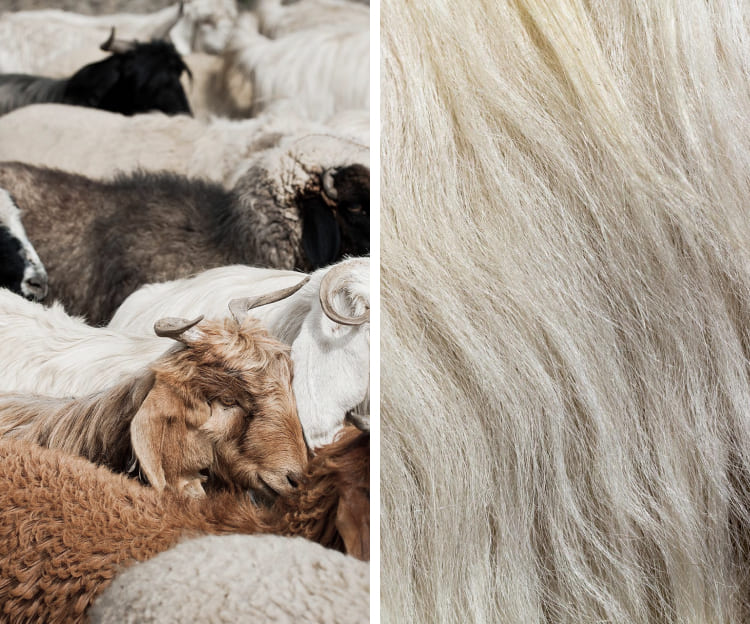
Natural Lightness
We make our cashmere from the wool of nomadic goats. They don’t have a lot of fat, so a thin long undercoat grows under the wool on the lower part of the abdomen. This undercoat is used in the making of cashmere. The thickness of cashmere hair is only 15-18 micrometers, which is 2.5-3 times thinner than human hair.

The Magic of Light Touch
Cashmere is considered to be synonymous with tactility. Its softness is only comparable to silk. This unique tactile experience is caused by the fineness of cashmere hair and the characteristics of the breeds of goats whose undercoat is sheared on the farms of our partners.

The Care of Warmth
Traditionally, any wool is valued primarily for the warmth it provides. Like all natural fibers, the structure of cashmere fibers is unique, although the structure of any wool is similar. It consists of numerous microscopic air pockets which retain warm air inside.
The regions where our partner companies are located are characterized by a cold continental climate. In this climate, whether it is northern China or the highlands of northern India, roaming goats have adapted to survival over the centuries by growing thicker and warmer wool.
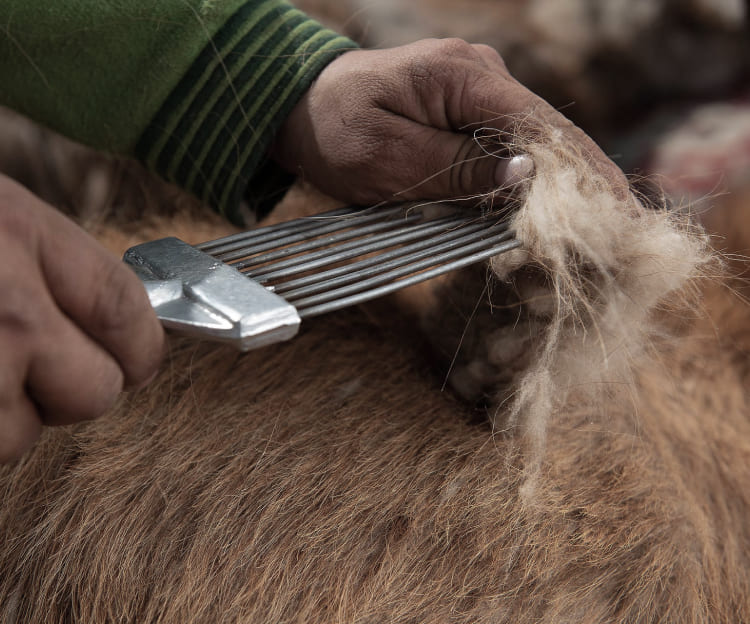
Spring Harvest
Cashmere is sheared or combed by hand in the spring, during the molting of goats. One goat produces about 150-200 grams of raw cashmere per year. After cleaning and processing, only 80-120 grams remain.
We are responsible for ensuring that the spring cashmere harvest begins only after warm daily temperatures are established in the collection regions in order not to expose the trimmed animals to the cold.

Traditions of artisans
The yarn is dyed and woven exclusively by hand because of its special fineness. It usually takes from one and a half to four weeks.
